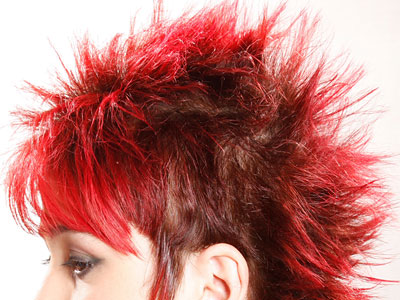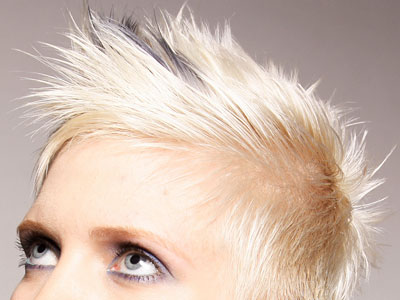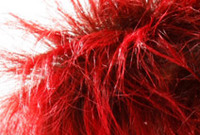With so many types of hair color on the market these days it's very difficult to know what you truly need and what's best for your hair. Add to that the increasing number of brands with new and exciting names and flashy strategies all trying to grab a piece of the multi-billion dollar pie, and you can easily end up being completely overwhelmed when choosing a hair color.
Now the thing is this: although there are many different types of hair color available- tints, semis, organic, metallic, bleach, hair strippers, clay lighteners, sprays and color sticks, and many others that would require a course in hair color science to understand- most people stick to 3 main types. I'm going to explain them below (you can read about the others in our Hair Color Glossary).
Tints
Tints are permanent hair colors, meaning they won't wash out. They come in gels, liquids, and creams, with some more conditioning and better performing than others. Tints are permanent because peroxide helps the color molecule bond with the hair. (Interesting fact: in 1907 a French chemist, Eugène Schueller, developed an innovative hair color formula that chemically made hair color permanent. This marked the beginning of the L'Oréal company.)
Use this type of color if you want to cover up grey 100%, you want to go a lighter shade, or you just want a hair color that will last and won't wash-out.
Pros and Cons? Permanent hair color, even high-lift color, is generally safe to use because it goes inert after 30 minutes and won't over-process. The only real downside is that when your hair grows the roots will need to be touched up on an ongoing basis. Also, reversing the color can be quite difficult.

Semis and Temporary Hair Color
Semis and temporary hair colors are the type of colors that shampoo out over a period of time (ranging from a single wash to 25-30 washes). They come in various forms, including liquids, gels, creams, mousses and natural products such as henna.
They are great for adding glossy, shiny and vibrant colors to the hair, and the perfect choice if you want a darker or brighter hair color, or you'd like to change your hair tone.
The best thing about semis and temporary hair colors is that they're generally not harmful to human hair- they even sometimes coat and protect the cuticle from harmful sun and heat appliances. The downside is they don't offer any decent coverage to grey hair because they tend to become translucent. Also, semis can't lighten your hair.

Bleaching
Bleaching is a process that permanently lightens your hair. If you're thinking of bleaching your hair you might want to consider full head bleaching (i.e. bleaching all your hair the same shade), foils or highlights. Bleach comes in various forms including gels for scalp applications, and powders. Gels usually cause the least damage.
The bleaching process is quite simple. Bleach is mixed with an activator (peroxide) that gets the bleach inside the hair shaft to dilute/disperse (or kill) the color molecules. The more color molecules that are diluted, the lighter the hair becomes.
Bleaching is most useful when you want to go from a dark hair color to a light one. But it's a harsh process that can cause irreparable damage and breakage to the hair shaft. Unlike tints, bleach remains activated, meaning that the longer it stays on the hair the more damage it will cause. Therefore, bleaching should always be performed by a professional who watches closely and evaluates at all times what is actually happening inside the hair.

This info about the 3 main types of hair colors should help you work out what's best for you. It's also essential that you think really hard about why you want to change your hair color; I mean, is it to cover grey, or for fashion, or just for a change? Once you're clear on this reason it'll be much easier to choose the appropriate color.





